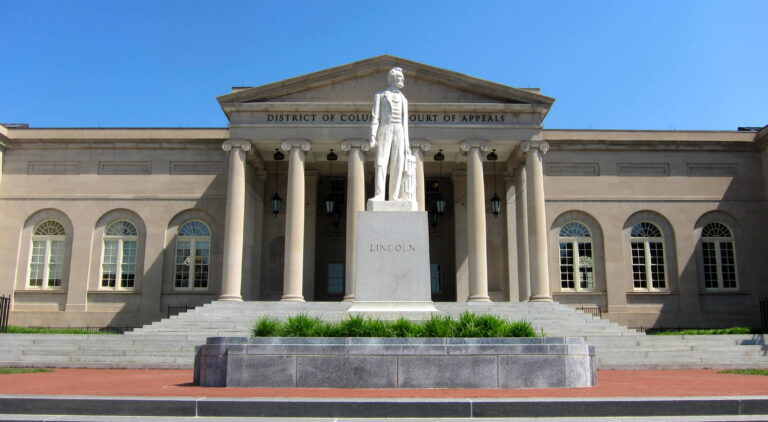This past Friday, January 30th, Canada’s Supreme Court held in a 5-2 decision that the Canadian constitution protects the right of public-sector employees to go on strike, as reported by the Huffington Post and the Globe and Mail. In this case, Saskatchewan Federation of Labour (S.F.L.) v. Saskatchewan, the Court struck down a Saskatchewan law that banned “essential” public-sector employees from going on strike. It held that the law violated the right to freedom of association, protected by section 2(d) of the Canadian Charter of Rights and Freedoms.
Section 2(d) of the Charter of states that: “2. Everyone has the following fundamental freedoms: . . . (d) freedom of association.” Since 2007, the Court has interpreted section 2(d) to protect the right to form unions and bargain collectively. Earlier this year, the Court interpreted Section 2(d) more to explicitly protect the right of public sector workers—in that case, the Royal Canadian Mounted Police—to unionize. The Court explained that the freedom of association protected by section 2(d) required a “meaningful process of collective bargaining that provides employees with a degree of choice and independence sufficient to enable them to determine and pursue their collective interests.” The previous labor-relations regime for the Mounted Police, which only permitted them to raise labor issue through a management-run scheme rather than an independently chosen union, therefore violated the Charter. For more information and analysis of that case, see Osgoode Hall Law School’s blog The Court.
The January 30th decision was a further expansion of that ruling. In this case, the S.F.L. challenged two 2008 laws passed by the Saskatchewan government that limited the power of unions: the Public Service Essential Services Act (PSESA) and the Trade Union Amendment Act. The PSESA allowed the government to unilaterally designate certain public-sector employees as “essential,” and then prohibit those employees from striking. The Trade Union Amendment Act made it more difficult for employees to certify a union to represent them, and changed the rules regarding permissible employer communications with employees. The Court struck down the PSESA and upheld the Trade Union Amendment Act. It explained that “the test [of whether a law violates § 2(d)] is whether the legislative interference with the right to strike in a particular case amounts to a substantial interference with a meaningful process of collective bargaining.” The Court further explained that the PSESA included “[n]o meaningful mechanism for resolving bargaining impasses,” therefore preventing employees from having a meaningful collective bargaining process. “Where good faith negotiations break down” the Court explained, “the ability to engage in the collective withdrawal of services is a necessary component of the process through which workers can continue to participate meaningfully in the pursuit of their collective workplace goals.”
The Court did leave the door open for limitations on the right of public-sector employees to strike, provided a “meaningful alternative” is available. Again, “[w]here good faith negotiations break down, the ability to engage in the collective withdrawal of services is a necessary component of the process through which workers can continue to participate meaningfully in the pursuit of their collective workplace goals.” The PSESA, however, violated the Charter because it provided no effective alternative for employees to advance their workplace goals. The Trade Union Amendment Act, on the other hand, did not violate section 2(d) because it did not “substantially interfere with freedom of association.”
The two dissenting judges argued that the Court’s ruling inappropriately interfered with the legislature’s policy judgments. They wrote that “[t]he statutory right to strike . . . reflects a complex balance struck by legislatures between the interests of employers, employees and the public.” Providing constitutional protections for strikers “upsets this delicate balance” and denies legislatures needed flexibility, they argued.
As the Law of Work notes, the majority decision explicitly embraces the test from Chief Judge Dickson’s dissent in the 1987 case Alberta Reference. In that case, which was overruled by Saskatchewan Federation of Labour v. Saskatchewan, the majority held that striking was not protected by section 2(d). In a well-known dissent, then-Chief Judge Dickson argued that “effective constitutional protection of the associational interests of employees in the collective bargaining process requires concomitant protection of their freedom to withdraw collectively their services.”






Daily News & Commentary
Start your day with our roundup of the latest labor developments. See all
December 22
Worker-friendly legislation enacted in New York; UW Professor wins free speech case; Trucking company ordered to pay $23 million to Teamsters.
December 21
Argentine unions march against labor law reform; WNBA players vote to authorize a strike; and the NLRB prepares to clear its backlog.
December 19
Labor law professors file an amici curiae and the NLRB regains quorum.
December 18
New Jersey adopts disparate impact rules; Teamsters oppose railroad merger; court pauses more shutdown layoffs.
December 17
The TSA suspends a labor union representing 47,000 officers for a second time; the Trump administration seeks to recruit over 1,000 artificial intelligence experts to the federal workforce; and the New York Times reports on the tumultuous changes that U.S. labor relations has seen over the past year.
December 16
Second Circuit affirms dismissal of former collegiate athletes’ antitrust suit; UPS will invest $120 million in truck-unloading robots; Sharon Block argues there are reasons for optimism about labor’s future.